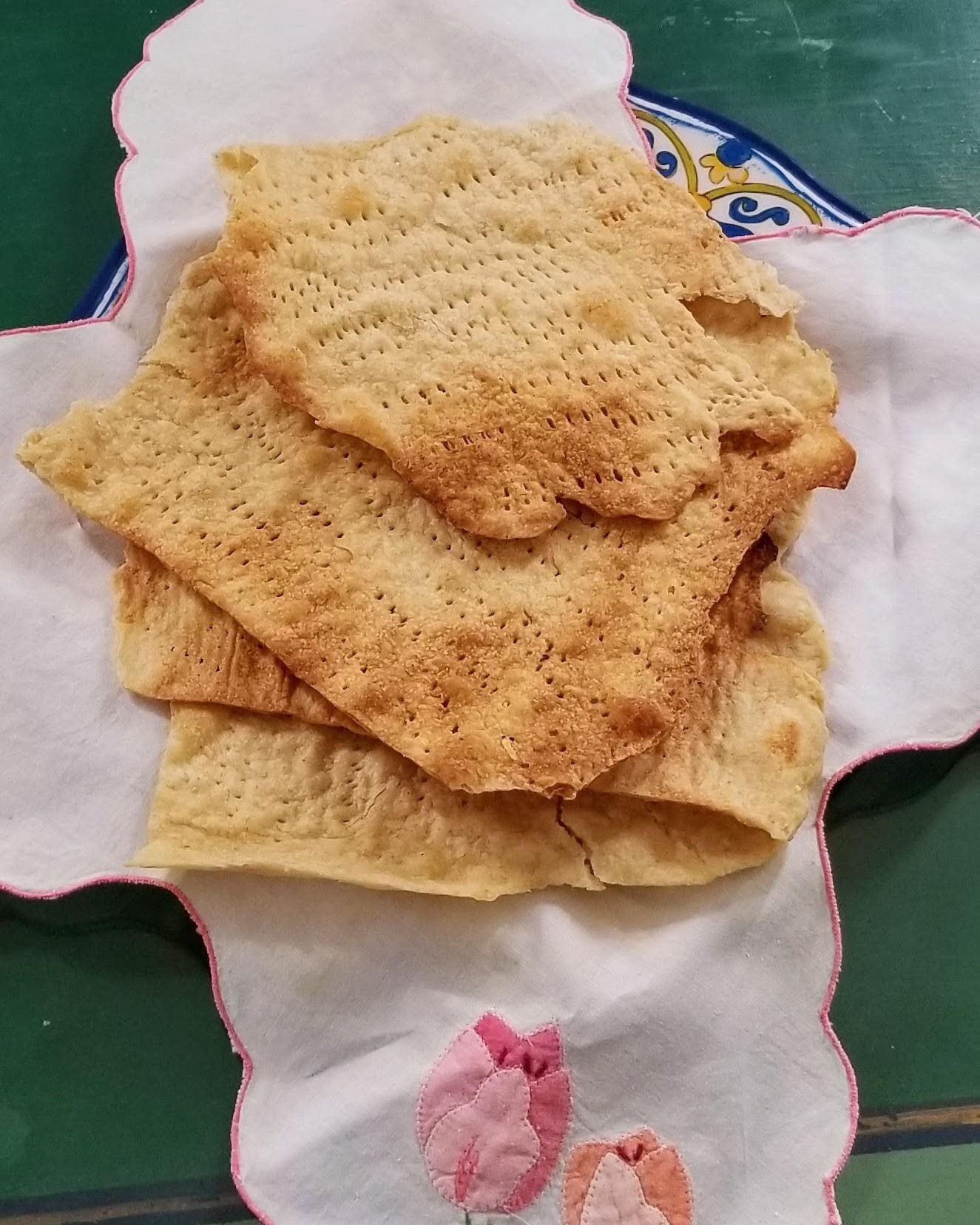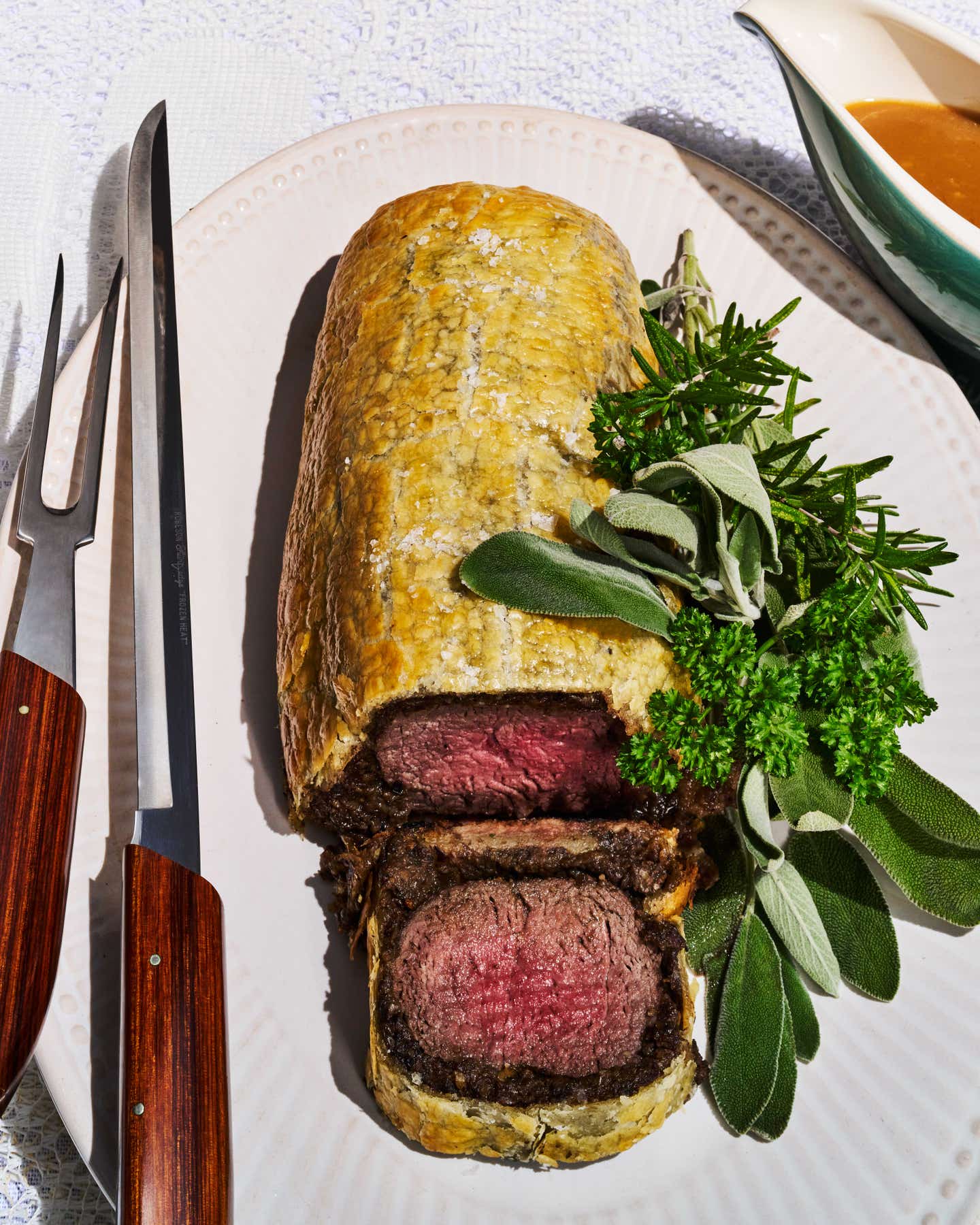You Never Forget Your First Gefilte Fish
Made from scratch, the polarizing Jewish appetizer is memorable—in the best way imaginable.

After we emigrated to Philadelphia from Moscow in 1974, my mom and I were invited to our first-ever Passover seder. I still remember being at the posh suburban home of our kind Jewish sponsors, paraded around as “heroic refugees” in our shabby hand-me-down clothes. When everyone stared at us and sang “Let My People Go,” Mom and I wept, from emotion mixed with embarrassment. To make matters even more embarrassing, while stammering out passages from the Haggadah in my still-broken English, I kept saying “ten pleasures” instead of “ten plagues.” Then the hostess brought out the gefilte fish. Flashing back to the whole stuffed carp my grandmother's family made in her native Odesa, Ukraine, I tucked into the neat American fish ball with great curiosity . . . and could barely swallow!

The taste was so shockingly sugary, Mom and I kicked each other under the table, later concluding that the hostess must have accidentally added sugar instead of salt. At our second seder the following night at a different house, the fish balls were even sweeter. Noticing our total bewilderment, the host explained that his people come from Southern Poland, where Jews liked their gefilte fish on the sweet side. “You Russians, don’t you make your fish peppery?” he inquired. Mom blushed. She’d never once made gefilte fish in her life; back in the atheist USSR, Jewishness was considered an ethno-cultural, not a religious, identity.

Now, many seders and almost five decades later, Mom and I know that Russian and Ukrainian Jewish babushkas usually cut their fish into thick steaks, remove the meat, and grind it with onions and carrots, then pack this stuffing (no sugar involved!) into the skin around the bones. The fish simmers short of forever with different ingredients, which sometimes include beets, until the bones all but dissolve— delicious, though not exactly Instagram-pretty. Some perfectionists even go a step further. Like my Odesa ancestors, who stuff a whole fish for a grand presentation. If you can find an accommodating fishmonger willing to remove the skin in one piece—like a stocking, with the tail still attached—this is by far the most festive and dramatic gefilte fish presentation.

The head is then packed with some of the minced fish filling and poached alongside. At serving time, you reassemble the beast and get ready for social media compliments. If you don’t have a whole skin, just make a loaf and lay a long strip of skin on top as a decoration. And of course, you can always prepare terrifically delicious fish balls from this mixture, in which case you’ll need about 3 quarts of stock. Back in 1920s Odesa, my great-grandmother Maria prepared her gefilte fish with pike from the Privoz market. In America, many ex-Soviet immigrants use carp. My personal favorite is a combo of delicate whitefish with the darker, oilier carp, which I buy live from my neighborhood Asian market. And while this recipe does contain a good pinch of sugar, it’s the slowly cooked onions that deliver the natural sweetness. Serve it with plenty of horseradish at the table.
This essay is adapted from Mastering the Art of Soviet Cooking, Anya von Bremzen’s memoir. Her new book, National Dish: Around the World in Search of Food, History, and the Meaning of Home, will be out in June.
Recipe

Keep Reading
Continue to Next Story










